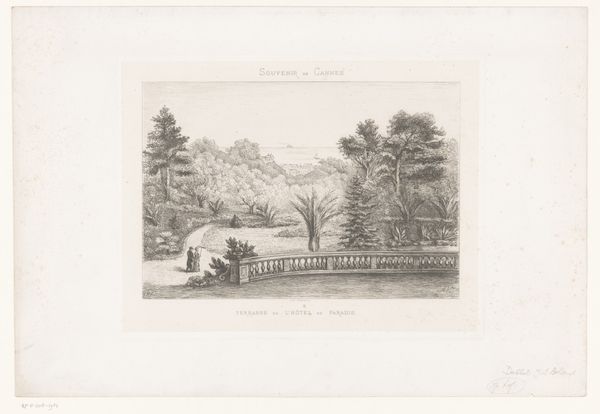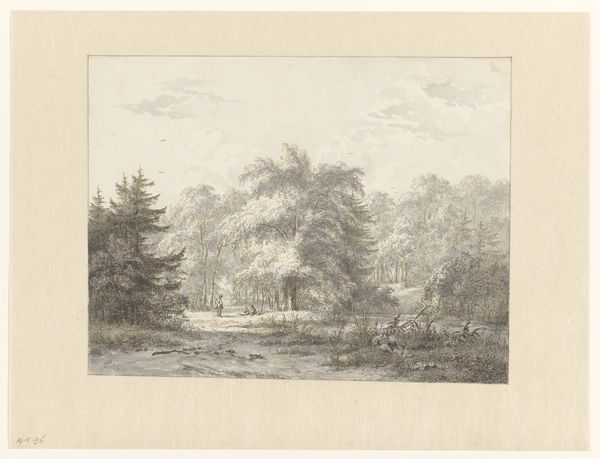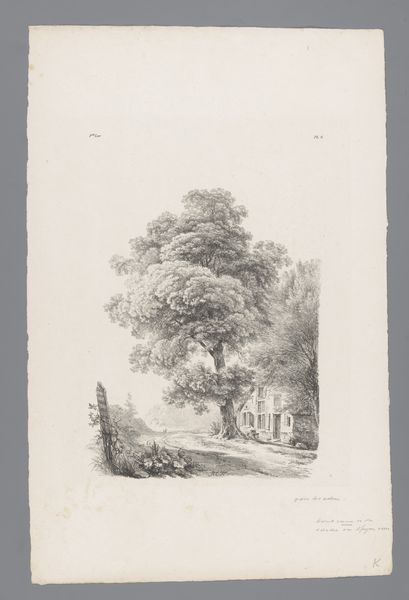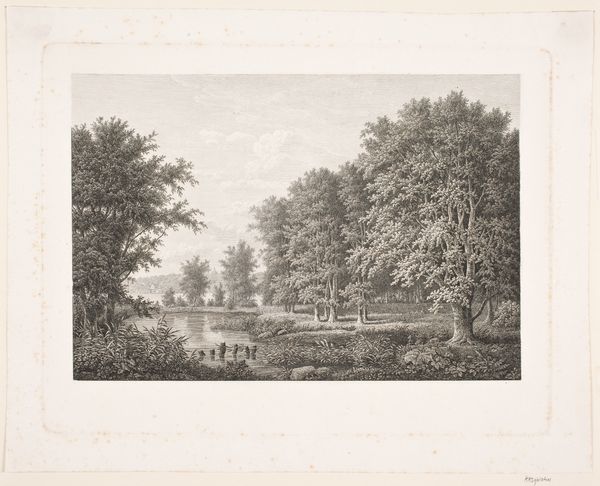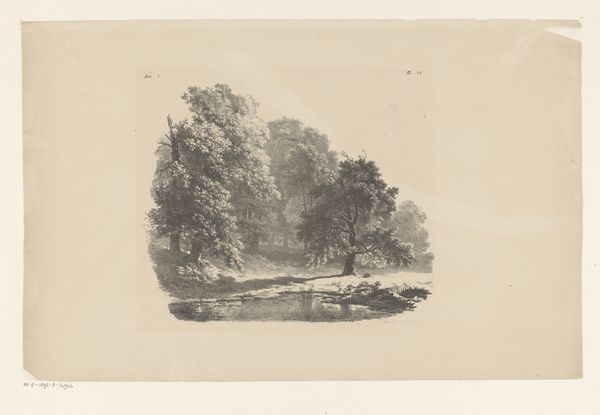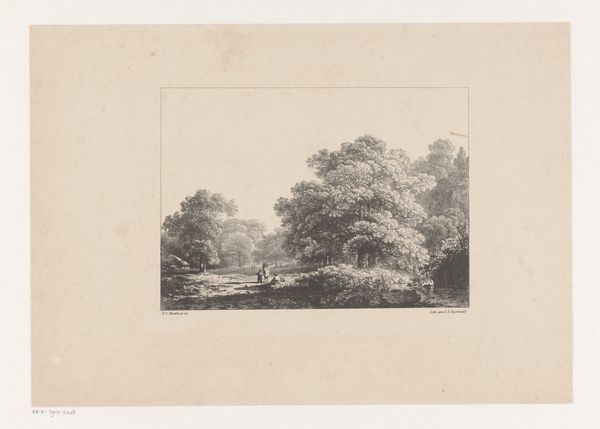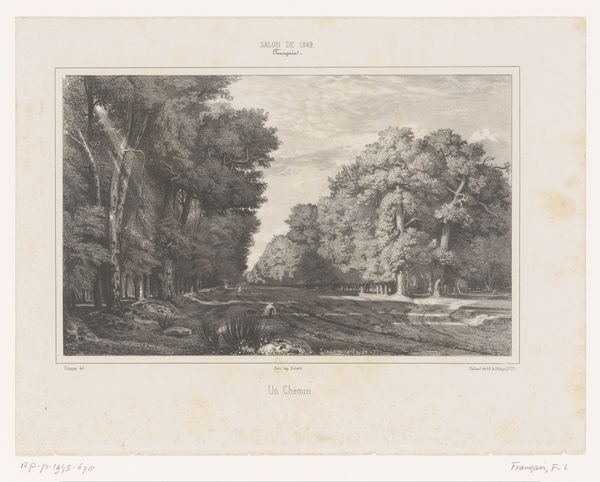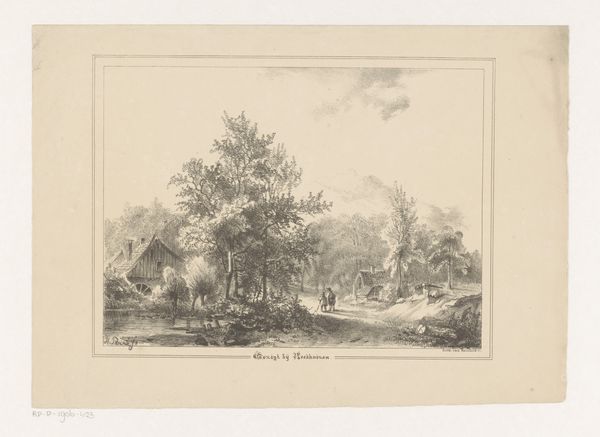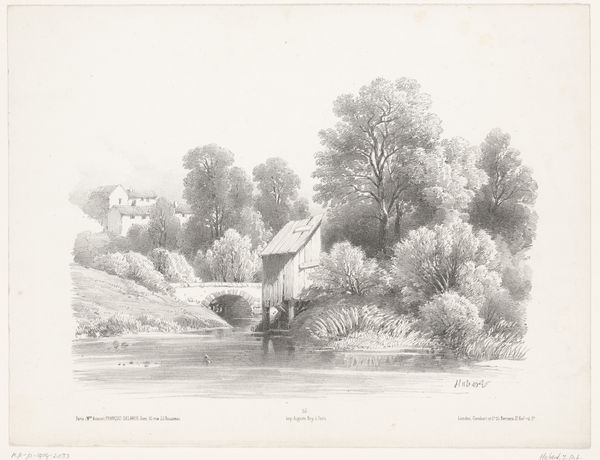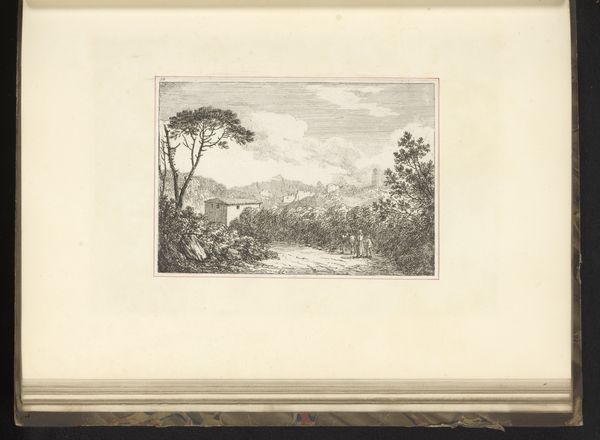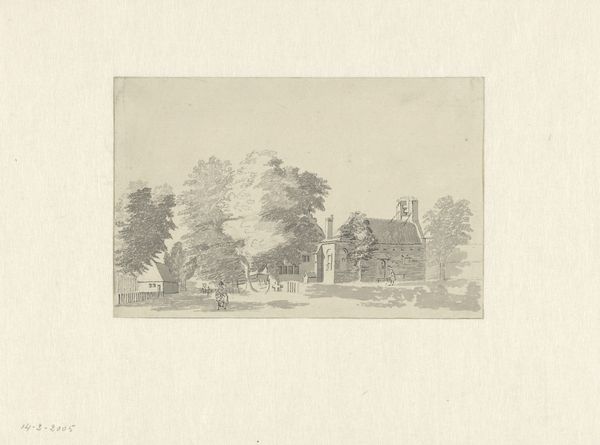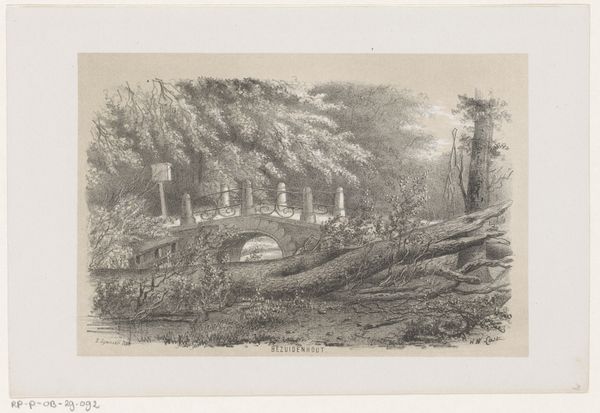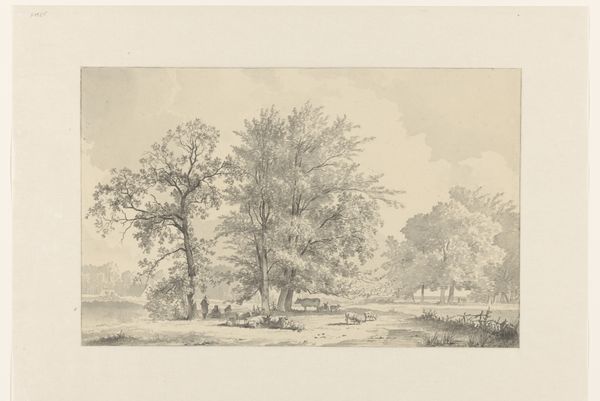
View of a bridge over the Colares river near Sintra 1840
0:00
0:00
drawing, print, pencil
#
drawing
# print
#
landscape
#
romanticism
#
pencil
Dimensions: Sheet: 13 11/16 × 20 7/8 in. (34.8 × 53 cm) Image (Sheet with image): 8 3/8 × 12 1/8 in. (21.2 × 30.8 cm)
Copyright: Public Domain
Curator: Welcome to this quiet corner of the Met, where we find "View of a Bridge over the Colares River near Sintra," a print made with pencil in 1840. Editor: It's remarkably tranquil. The water's surface is so still, reflecting the bridge and foliage almost perfectly. I sense a deep connection between nature and humanity. Curator: Indeed. The work reflects the Romantic era's interest in both the sublimity of nature and in exploring the idea of landscape itself as a marker of culture. We see this scene near Sintra, a region known for its blend of untamed wilderness and constructed environments. It became a popular location for wealthy elites building new estates and landscapes from scratch, thus superimposing their own cultural symbols over the natural environment. Editor: And the bridge itself becomes a symbol of connection, doesn’t it? Linking not just two banks, but perhaps representing a transition from the earthly to something… more transcendent? Notice how the figures on it are mere silhouettes, devoid of distinct identity. It's as if they are also passing into an idea. The bridge as liminal space between concrete reality and ethereal imagination. Curator: It's also important to note who the intended audience for a print like this would have been. This image would have been acquired for albums and scrapbooks by the leisured classes, especially British tourists traveling to Portugal. What would a location like Sintra have signified for them and their cultural milieu? What kind of fantasies, anxieties and aspirations were projected onto the place and the image of that place? Editor: Those pencil lines are so fine, it makes me consider how such subtle techniques are imbued with significance too. It speaks to delicacy and refinement, inviting us to contemplate what lies beyond the purely visual appeal of this piece. The softness, in this case, serves not only aesthetic needs, but hints at deeper longings within us. Curator: Precisely, a controlled way of interacting with nature for the aspiring Romantic traveler, I think. So, while the Romantics outwardly celebrated the wildness of nature, social and institutional pressures were subtly directing how that celebration could occur and the kinds of signs it might use. Editor: A beautifully composed study in contrasts, both visually and symbolically. Curator: I'd agree, providing insight into not only the beauty of Sintra, but also into the cultural practices that constructed the idea of landscape during the 19th century.
Comments
No comments
Be the first to comment and join the conversation on the ultimate creative platform.
